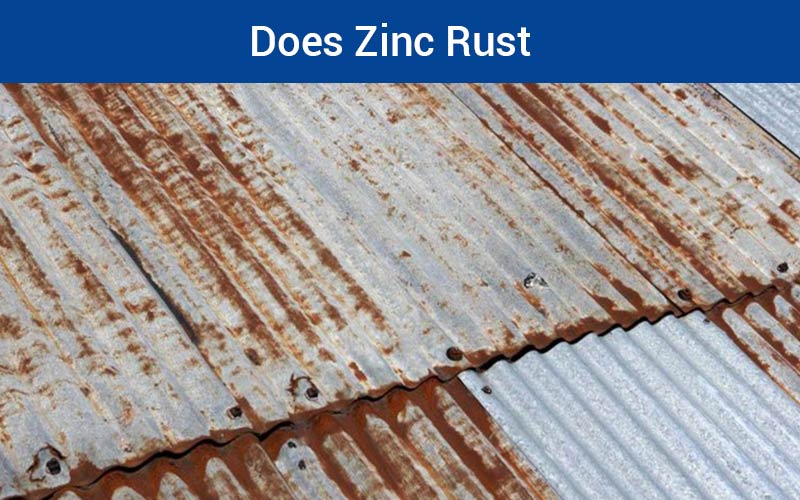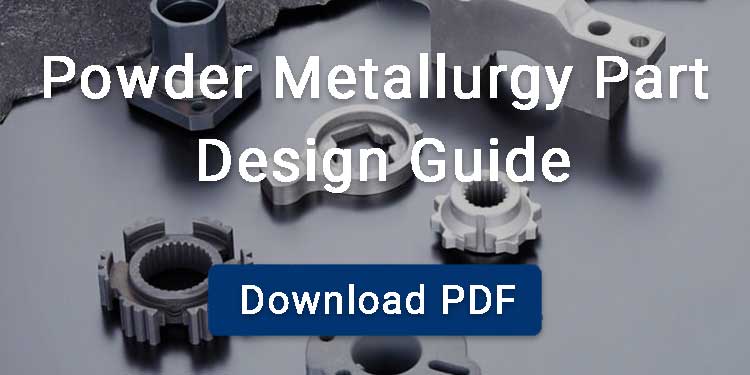Does Zinc Rust? Unlike iron, zinc doesn’t form destructive rust but creates a self-healing protective layer that stops corrosion. This unique property allows zinc to sacrificially protect steel, delivering decades of low-maintenance durability in harsh environments. Explore the science behind zinc’s corrosion resistance and why it outperforms other metals in industrial applications.
Contents
Does Zinc Rust or Corrode?
Zinc’s ability to withstand corrosion is unlike that of iron, why this makes a difference for industrial applications, and how this natural reaction improves long-term durability in real-world scenarios.
How Zinc Reacts with Air and Water
The mentioned metals develop a compact oxide and carbonate layer in contact with air and water. Unlike iron, which yields unstable rust flakes, zinc’s corrosion reaction is used to create a tight barrier against corrosion that isolates the underlying metal from the corrosive element.
This self-healing protection continues as long as any zinc remains, meaning zinc-coated items will not fall below the protective corrosion level of the coating; the zinc will corrode first, even when left out in the elements on a roof.
What Happens to Zinc When It Is Left Out
Newly formed surfaces of zinc immediately form a protective film on exposure. This develops into a firm patina over the years—mostly zinc carbonate—which protects against water and pollutants.
- In the presence of high sulfur, zinc can, when the rainwater evaporates, form zinc sulfate.
- In coastal areas, chloride induces dissolution of soluble zinc salts. These processes depend upon local climate and pollution, and therefore, periodic electrochemical methods enable engineers to predict when maintenance may be required before visual decay becomes evident.

Zinc Patina vs Iron Rust
Unlike iron, where rust accelerates the generation of new openings, the patina on zinc stops any further corrosion and stays firmly fixed, offering engineers more durable protection and lower maintenance than untreated steel.
| Characteristic | Zinc Patina | Iron Rust |
|---|---|---|
| Color | Blue-gray to white | Reddish-brown |
| Structure | Dense, adherent | Porous, flaky |
| Base Metal Effect | Protective | Damaging |
| Volume Change | Minimal | Significant (up to 6x) |
| Progression | Self-limiting | Continuous |
In the case of outdoor structures, zinc will follow the patina pathway. It extends the life, while iron corrosion means early intervention to prevent failures.
How Zinc Resists Corrosion
Jump right to how zinc naturally prevents corrosion, in comparison with other metals in harsh environments, and environmental variables that may or may not challenge its performance.
Protective Oxide Layer Formation
Zinc oxidizes rapidly in air to form a protective oxide film. With time, it forms a tough patina that stops further corrosive action. To maintain this already naturally protected shield, do not cut into the surface or use caustic chemicals. Scratches reveal new zinc that will heal itself, but frequent damage may reduce life.
Corrosion Resistance Of Zinc VS Other Metals
Against uncoated steel, zinc offers superior performance in most outdoor environments and is more cost-effective than premium alloys. Opt for zinc with long-lasting, budget-friendly performance in large applications or areas of restricted maintenance access.
his table shows typical corrosion rates of common metals, with zinc, aluminum, and lead exhibiting the lowest annual material loss.
| Metal | Rural Corrosion Rate (µm/yr) | Industrial Corrosion Rate (µm/yr) | Marine Corrosion Rate (µm/yr) |
|---|---|---|---|
| Zinc | 1 | 4 | 8 |
| Carbon Steel | 20 | 50 | 100 |
| Aluminum | 0.3 | 1 | 2 |
| Copper | 0.6 | 1.5 | 1.5 |
| Lead | 0.5 | 1.5 | 2 |
For the most durable finish, choose zinc over bare steel and review local weather conditions when choosing a finish.
Environmental Factors Influencing Zinc Corrosion
Zinc performs best in mildly neutral to slightly alkaline environments, typically within pH 6 to 10. The corrosion rate doubles for every 10°C increase in temperature. In polluted or marine atmospheres, additional sulfur or chloride increases zinc’s sacrificial consumption, so optimize coating thickness according to site conditions.
How Zinc Protects Against Corrosion
Find out why zinc is sacrificial to protect steel and how this works at a microscopic level—and the testing that supports its protective reputation.
Sacrificial Protection Mechanism in Practice
Zinc also acts as a buffer for steel—it corrodes instead of the base material below the cover. Even with small scratches, zinc stays active if enough coating is still present. The more surfaces you cover, the less likely you are to get any pitting, and don’t forget to measure with some reference readings; below -0.85V still means you are cathodically protecting.
Why Does Zinc Sacrifice Itself to Steel?
When moisture (such as from rain or dew) links zinc to steel, there is an electric current: zinc donates electrons (serving as an anode), thus sacrificing itself for the protection of steel against rusting. This process may still persist as long as the exposed portion is small compared to the coating. If you want the protection to last even longer, do not use a design where a small zinc area has to protect a large steel area.
Laboratory and Field Tests of Zinc Protection
Corrosion testing plays a vital role in validating zinc’s long-term durability. Accelerated lab tests like salt spray (ASTM B117) demonstrate hot-dip galvanized steel’s ability to resist red rust far longer than exposed bare steel. Field data supports this reliability: highway guardrails, bridges, and many other structures with zinc coatings typically last decades beyond their intended design life. For project estimates, employ site-specific corrosion calculators to predict the life of zinc under local conditions.
Zinc Plated Steel and Rust Resistance
Discover the latest in zinc plating including new technologies and thicker, more protective coatings, and how to select the optimal finishing color to indicate compatibility.
Zinc-Plating Processes and Industrial Standards
Electroplating produces thin, uniform layers of zinc (2–25 μm), while mechanical plating provides impact bonding of the zinc. Refer to ASTM B633 to choose appropriate service class (e.g., SC1 for indoor use, SC3 for exterior automotive). For applications requiring high performance, such as automotive and critical environments, aim for SC3 or higher to have at least 96 hours of salt spray survival.
To evaluate plating quality, run tape or bend adhesion tests. Properly applied zinc should not flake off during contact.
Influence of Coating Thickness on Corrosion Performance
The thicker the zinc coating, the longer this protection will last in proportion. Approximately, each micron of thickness tends to correspond to a year of life in many urban areas. Determine the appropriate thickness for your application given the local corrosion rates, and then provide a 20% safety margin if reliability is critical.
| Coating Thickness | Salt Spray Resistance | Lifespan (Urban) | Lifespan (Marine) |
|---|---|---|---|
| 5 microns (standard electroplating) | 24–96 hours | 2–5 years | 1–2 years |
| 25 microns (heavy electroplating) | 200–400 hours | 10–15 years | 5–8 years |
| 85 microns (hot-dip galvanizing) | 1,000+ hours | 40–60 years | 20–30 years |
Calculate coating thickness according to how often you plan to repaint and your finished product’s surrounding environment.
Color Change in Zinc Coating and Its Performance Implication
Finish colors indicate different post-treatments. Clear/blue zinc utilizes chromate conversion for basic protection; yellow adds extra defense; and black is sealed for extreme environments. By RoHS-compliant blue zinc (trivalent chromate) has an approximate resistance ratio of 70% to classic yellow (hexavalent chromate). Use thicker coats or additional applications for heavy-duty or critical applications.
Hot-Dip Galvanization: Advanced Protection
Find out what makes the hot-dip process one of the world’s most effective solutions for protecting reinforcing steel and when it deserves a place in your most challenging projects.
Hot-Dip Galvanizing Process Breakdown
The hot-dip galvanizing process involves the immersion of cleaned steel in molten zinc, a highly reactive metal, to create a multi-layered structure and form a deep and durable bond. Regulation of immersion speed ensures a homogeneous, resistant-to-physical-force coat.
Hot-Dip Versus Electroplated Zinc: A Durability Comparison
Hot-dip galvanizing application accumulates coatings 3–6 times thicker than electroplating, significantly improving the corrosion resistance of galvanized steel and extending its service life for decades. It is ideal for bridges, towers, and infrastructure in harsh weather and chemical environments.



